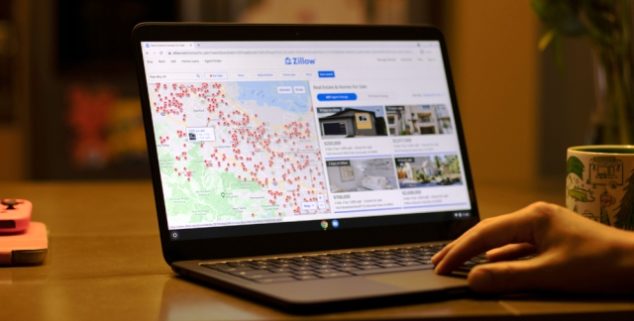Opinion
Now, more than ever, affordable broadband access is crucial
 A computer user searches for housing using bro0adband. (Photo: Tada Images. via Shutterstock)
A computer user searches for housing using bro0adband. (Photo: Tada Images. via Shutterstock)Over the past year, Californians have depended on reliable internet access to learn from home, connect with a physician virtually, schedule a vaccination appointment, or have essential goods delivered to our homes.
Even as the internet has kept us connected – there is more work to do to close the digital divide – especially for rural and low-income families.
During this time of great disruption to our daily lives and dramatic shifts in behavior, our state’s broadband networks rose to the challenge despite unprecedented demand and network traffic.
The current pandemic has shown how crucial a role high-speed internet access plays in our daily lives.
According to US Telecom, internet traffic jumped 27 percent at the height of the public health crisis. Even with the significant increase of traffic, families were largely able to work and learn from home while sheltering in place. Furthermore, broadband networks helped small businesses remain resilient by making the pivot to e-commerce.
The current pandemic has shown how crucial a role high-speed internet access plays in our daily lives. In fact, a new Pew Research Center survey found that 87% of Americans say the internet has been essential or important to them during the coronavirus outbreak.
Today, AT&T is on the ground working toward the goal of connecting every Californian with broadband. We share the commitment to finding solutions to the digital divide and we’re collaborating with policymakers, community leaders and local officials to help reach Governor Newsom’s goal of connecting every Californian with accessible and affordable broadband.
Our company is doing our part to connect every home, every small business, and every community across the state with affordable internet by taking the following steps:
—Investing in and expanding the reach of our broadband networks
Our employees know how to build and maintain modern networks to keep Californians connected and we have invested more than $25 billion in California between 2010 and 2019.
–Expanding affordable broadband
During the pandemic, we’ve stepped up to expand eligibility to make our internet services more affordable for students, educators, and others who need it most.
Connecting teachers and students
We’re partnering with local organizations and school districts to deliver high-speed fiber internet, Wi-Fi, and personal hotspots.
As California emerges from the pandemic, we know that our future depends on digital equity.
Unfortunately, too many of our fellow Californians face barriers to connectivity.
Perhaps nowhere has the digital divide been felt more acutely than with educating our students. When schools closed their doors, too many students were left scrambling to keep pace with their online classes. During the pandemic, AT&T formed private-public partnerships with school districts and cities to provide students who lacked internet access, including a new public-private partnership with the City of San Jose that provided 11,000 hot spots to families and students.
While creative policy solutions will help, more importantly, we must build.
While the homework gap is not new, the pandemic has heightened the challenges—most acutely in rural and under-resourced neighborhoods, where the effects disproportionately impact 1 in 3 students of color, students with disabilities, and roughly 10 percent of all public school teachers. Whether students are learning remotely or in the classroom, having access to affordable high-speed internet and devices is critical for successful learning outcomes.
Our state leaders are working to find solutions to these digital infrastructure challenges, with 20 broadband-related bills under consideration in the state legislature. Many direct investments to unconnected communities, others streamline often onerous permitting requirements to build infrastructure, and a few sensibly subsidize discount internet services.
While creative policy solutions will help, more importantly, we must build. This begins with precisely identifying broadband gaps across the state. To successfully target unserved Californians with infrastructure deployment, we need to know who truly lacks access, and specifically where they live on a granular, location-by-location level.
However, current broadband mapping is woefully inadequate. Accurate maps will enable us to precisely target subsidy dollars to close any remaining broadband gaps. Fortunately, Congress has appropriated $65 million for the FCC to produce maps capable of being filtered down to the address-level. California policymakers should direct investments to areas that are clearly identified by the FCC as unserved.
Last, with billions of dollars of expected federal funds for California, policymakers should direct infrastructure investments to the most difficult to serve areas, rather than where the market is working. In underserved urban communities with access to broadband, policies should focus on closing the gap in broadband adoption and affordability to achieve the goal of universal connectivity.
Together we can help make broadband an available and affordable reality for every Californian.
—
Editor’s note: Rhonda Johnson is the President of AT&T California.
Want to see more stories like this? Sign up for The Roundup, the free daily newsletter about California politics from the editors of Capitol Weekly. Stay up to date on the news you need to know.
Sign up below, then look for a confirmation email in your inbox.

Leave a Reply